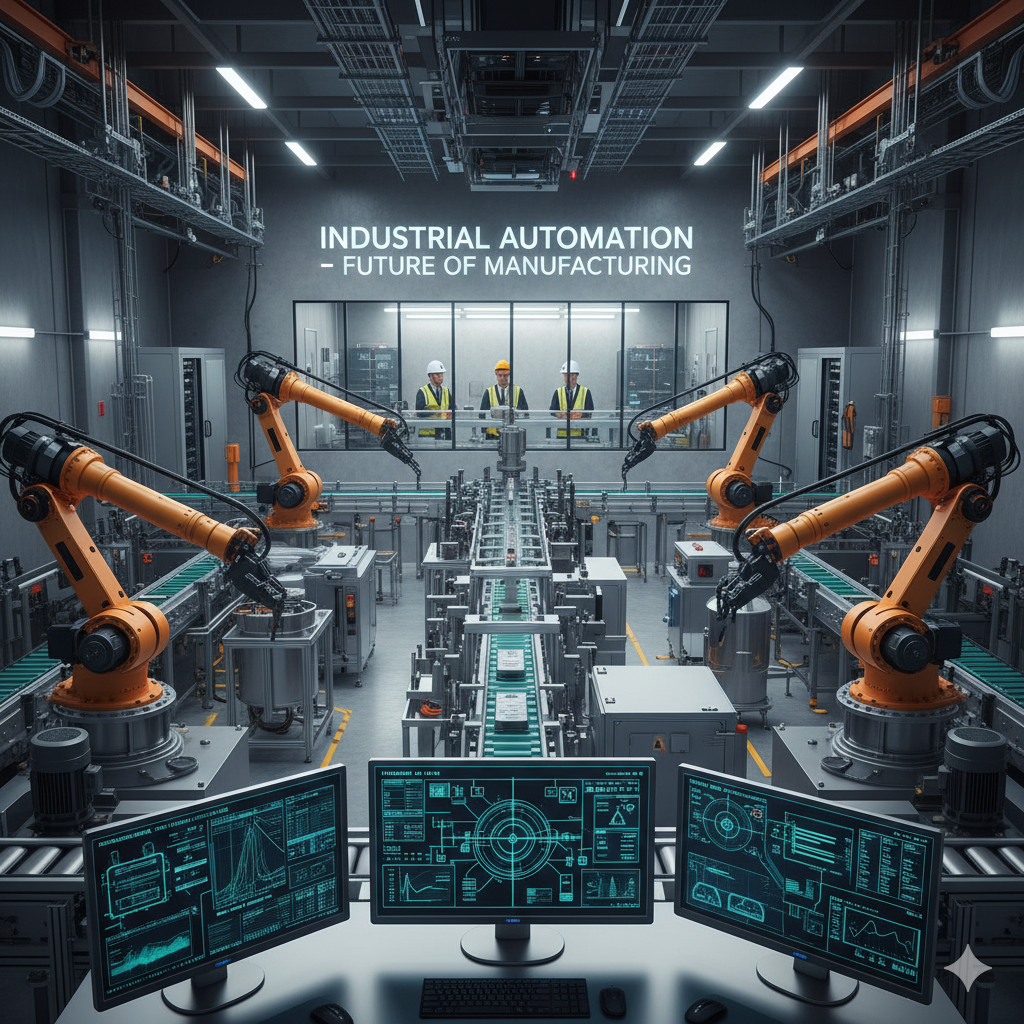Mapping the Automation Frontier
From Europe's precision-engineered hubs to Asia's surging factories, industrial process automation is etching a global narrative. Valued at USD 58.36 billion in 2022, the Industrial Process Automation Market eyes USD 96.06 billion by 2030 with a 5.4% CAGR, but its story varies by region—each a unique chapter in efficiency's epic. Let's traverse these landscapes, uncovering drivers, dominances, and destinies.
Europe: The Automation Vanguard
Europe commands the throne, its market share unyielding thanks to tech prowess and regulatory rigor. Energy & utilities lead adoption, with DCS systems stabilizing grids amid renewables' rise. Oil & gas follows, automating rigs for safer, greener extractions.
The EU's environmental edicts are rocket fuel: automation slashes emissions, aligning with the Green Deal. Advancements like 5G and edge computing turbocharge this—real-time data for wind farms, predictive analytics for pharma sterility.
Spotlight: Mobile Industrial Robots' 2021 MiR600 AMR revolutionizes material handling in German autos, boosting throughput 25%. Challenges? Aging infrastructure demands retrofits, but Siemens' modular PLCs ease the transition.
North America: Innovation's Heartland
Across the Atlantic, North America—U.S., Canada, Mexico—thrives on R&D muscle. The U.S. dominates, with shale booms demanding SCADA for remote monitoring. Canada's mining sector automates harsh terrains, using HMIs for operator safety.
Growth stems from IIoT incentives under Biden's infrastructure bill, fostering digital twins in aerospace. Mexico's maquiladoras integrate MES for just-in-time manufacturing, drawing nearshoring waves.
Key stat: Emerson's 2022 Crosby valve enhances safety in U.S. refineries, cutting relief incidents 40%. Hurdle: Talent gaps, but academies like MIT bridge with automation curricula.
Asia-Pacific: The Rising Powerhouse
Asia-Pacific's ascent is meteoric, steady share gains fueled by Industry 4.0 fervor. China and India's manufacturing booms automate textiles and electronics, PLCs ensuring micron precision.
South Korea's shipyards deploy industrial robots for welding, while Indonesia's palm oil plants use process analyzers for yield optimization. Pharma and food & bev surge too—Honeywell's PlantCruise powers 80% of Regreen Excel's Indian ventures.
Drivers: Government pushes like Make in India, blending subsidies with skills training. 5G rollouts enable AMR fleets in warehouses.
Challenges: Fragmented supply chains, but Belt and Road initiatives standardize tech.
Rest of the World: Emerging Hotspots
Latin America's Brazil automates agribusiness, SCADA irrigating vast soy fields. Middle East's UAE leverages oil wealth for smart cities, DCS in desalination plants. Africa's South Africa mines with IoT sensors, curbing theft and boosting output.
Opportunities abound: EGA-Microsoft's 2023 collab accelerates aluminum automation in the Gulf. Restraints? Infrastructure lags, but solar-powered edge devices offer leaps.
Segmentation Across Borders
Globally, components vary: Europe's software-heavy, Asia's hardware-focused for scale.
Types? DCS rules continuous processes in oil-rich Middle East; PLCs fit discrete assembly in Asian electronics.
End-users: Power & energy universal, but mining shines in Africa, glass in Europe's eco-builds.
Global Glue: Trade, Standards, and Collaborations
Trade flows tech: Europe's ABB exports to Asia, fostering hybrids. Standardization efforts, like IEC 61131 for PLCs, combat lock-in. Partnerships bridge divides—Schneider-Accenture's DSF cuts dev time 80%, scalable worldwide.
The Road Ahead: Balanced Global Growth
By 2030, Europe's lead persists, but Asia's 6%+ sub-CAGR could challenge. RoW's untapped potential promises inclusivity. Success hinges on equitable tech transfer—ensuring automation lifts all regions. In this global mosaic, automation isn't conquest—it's connection, crafting a unified, ultra-efficient world.





Comments